The Google Nexus 5X Review
by Brandon Chester on November 9, 2015 8:00 AM EST- Posted in
- Smartphones
- LG
- Mobile
- Android 6.0
- Nexus 5X
System Performance
The Nexus 5X sits in an interesting position as far as its price goes. I don't know many other devices that are priced at the high end of the $300 range, as usually an OEM targets between $250-300 or somewhere around $450. This gives Google some room to play around with what hardware they offer, as the Nexus 5X is not competing directly with flagship devices like the Nexus 6P is. On the other hand, the 5X probably doesn't bring in a ton of profit for Google or LG due to its margins, and it seems more like a vessel for bringing Android to a wider base of customers by offering something good at a lower price than one might expect.
While the Nexus 6P uses Qualcomm's Snapdragon 810 SoC in order to be competitive with other flagships from a specs and marketing standpoint, the Nexus 5X takes a step down to Snapdragon 808. This is a 6 CPU core part, with a quad core Cortex-A53 cluster that runs at up to 1.4GHz, and a dual core Cortex-A57 cluster that peaks at 1.8GHz. This is the same SoC used in the LG G4, and so in tests that are more software independent we should see similar performance to the G4. Otherwise tests that are more influenced by software like PCMark may see improvements or reductions in performance depending on the situation, as the Nexus 5X ships with Android Marshmallow, while the G4 shipped with Lollipop.

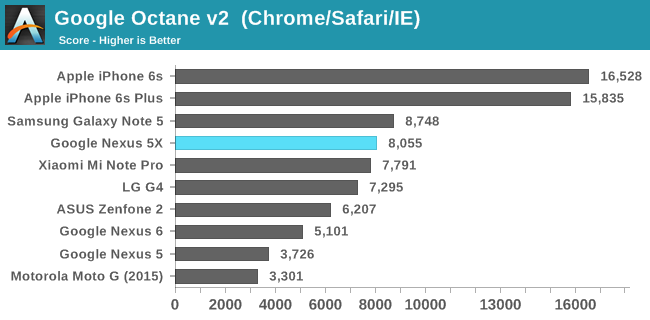

JavaScript performance on the Nexus 5X is different than the G4 in some interesting ways. Kraken ends up being around 700ms slower on average, and I've run the test several times to confirm this. Octane actually gives the lead to the 5X, as does WebXPRT 2015, with the gap between the two phones in the latter test being very significant. This is likely the result of improvements to Chrome in the time between the G4 review and now, and I'm not too sure what's causing the performance gap in Kraken.
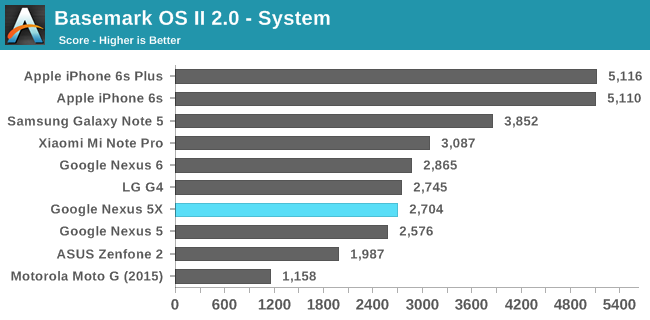
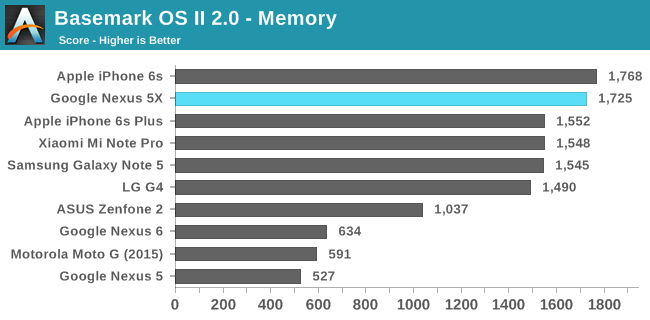



BaseMark pegs the Nexus 5X's overall performance as being in the middle of our sample of results. I've never been very fond of simply averaging test results, but when examining the specific sub scores we can see that the Nexus 5X does surprisingly well in the NAND memory portion of the test, while most of the other scores actually do fall in the middle of the charts, and so in this case the overall result is actually fairly accurate. Later in the review you'll see that this storage result is somewhat suspect, and I would speculate that the reason it's noticeably higher than the G4 is software optimizations made in Android Marshmallow rather than a faster NAND solution.
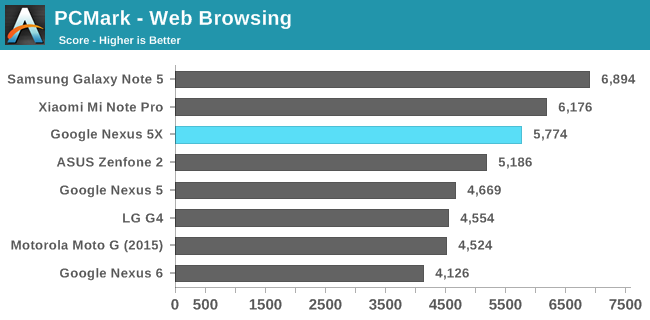
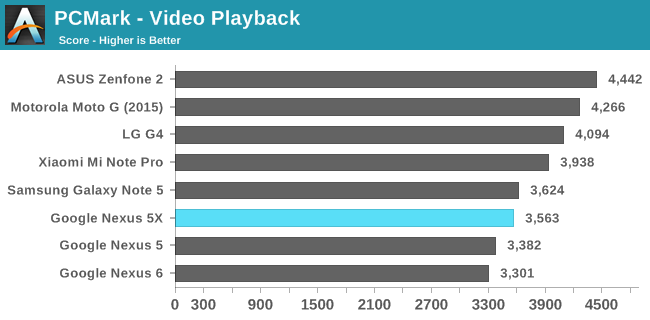
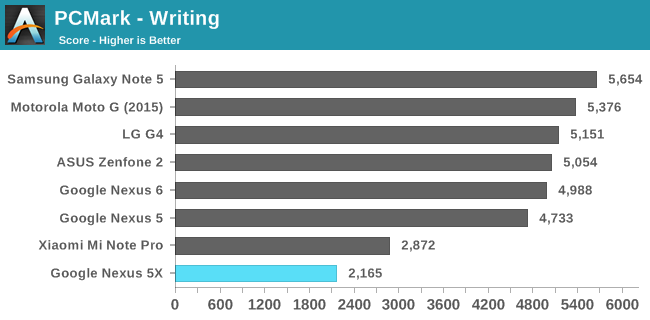
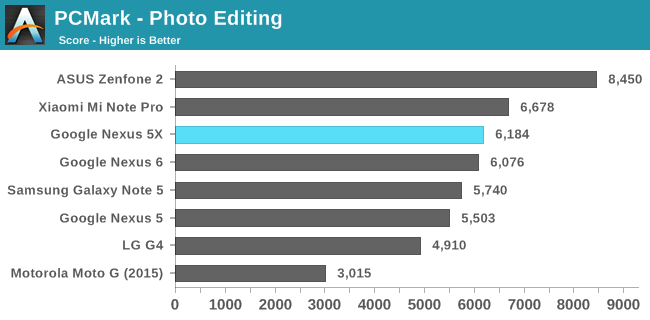
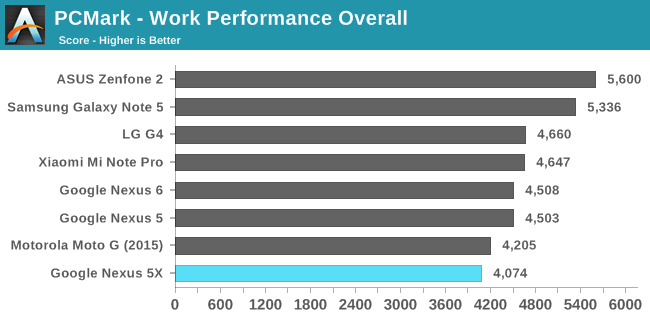
In PCMark's overall score we see that the Nexus 5X is actually at the very bottom of the chart. However, as usual it's important to analyze each sub score to see exactly what is contributing to the overall score. In this case it's clear that the writing sub test is what kills the score for 5X, while the rest of the results are closer to the median score of all our comparison devices. The big question is why the 5X does so poorly in the photo editing test. PCMark can be heavily influenced by software changes, and to me it seems that some change in Android Marshmallow's EditText view has caused regressed performance compared to Lollipop. I observed a large decrease in performance when I re-ran the test on the Nexus 6 to confirm this. At the same time, the web browsing and photo editing scores on Marshmallow are clearly much higher than on Lollipop, and so I think in most cases you would actually observe better performance on the Nexus 5X than the LG G4, rather than the substantially worse performance that the overall score implies.
Sustained Performance
I think it's very important to clarify that some of the benchmarks we use typically only run for a fairly short period of time. Kraken and Octane can be completed in well under one minute, while WebXPRT 2015 actually runs for ten minutes. BaseMark OS II and PCMark also take a few minutes to run, but it's definitely not the same workload length as what you'd see while playing a game or editing a video. Because the Nexus 5X uses Snapdragon 808 I wanted to take a look at what happens to the CPU when there's a heavy load placed on it for a prolonged period of time. I also wanted to compare the results to those from the Nexus 5 and Nexus 6, to see how the devices compare once their CPU has throttled to a more realistic clock speed for the real world than the peak performance which typical benchmark results will show.
To see how the CPU behaved during a heavy workload I profiled clock speeds for all the CPU cores while running BaseMark OS II's battery test. This was done on the Nexus 5, Nexus 6, and Nexus 5X. Because the frequencies of the cores oscillate heavily I've graphed the results using longer intervals between points than what is possible to poll, as what I really wanted to show was the behavior of the CPU over time which isn't visible with the noise that plotting every millisecond creates.
Stripping out data points creates some visual errors, as it makes it appear that an SoC spends longer dropped to a low frequency between peaks than it actually did. The key points to get from the graphs above are that for some reason the Snapdragon 800 SoC in the Nexus 5 only ends up using 3 of its 4 cores most of the time, with the frequency on the other three Krait 400 cores oscillating between 1GHz and 1.6GHz. The Snapdragon 805 in the Nexus 6 keeps all four cores at their max frequency for about twelve minutes before they all throttle down to 2GHz and remain there for nearly two hours. Meanwhile, Snapdragon 808 can only keep its two A57 cores at their peak frequency for two minutes before throttling both down to 633MHz and putting the A53s up to their peak 1.44GHz. After twelve minutes the A57s are just shut off entirely, and you're left with a cluster of 4 A53 cores at 1.44GHz. I didn't bother running this test as long as I did for Snapdragon 800 and 805 because the events at the two and twelve minute marks tell you everything you need to know.
Of course, the performance of a device can't be determined simply by the number of cores and the clock speed. The most relevant comparison for the Nexus 5X is the Nexus 5. Krait 400 does have an IPC lead over Cortex-A53, particularly in workloads where out-of-order execution can be leveraged. However, with the Nexus 5 we're looking at three Krait 400 cores hovering between 1 and 1.6GHz, while the 5X can assign threads to four 1.44GHz Cortex A53 cores and two 633MHz A57s for the first twelve minutes. Past this point I think which device performs better is going to depend on the actual workload, and if you're running a CPU-intensive app that isn't heavily parallelized the Nexus 5 may very well end up being faster. For more parallel workloads, or tasks that only require short bursts of performance that are more friendly to the Cortex-A57 cores, you'll see the Nexus 5X providing better performance.
I actually would have liked to have a Snapdragon 801 data point, but Snapdragon 805 in the Nexus 6 is also a relevant comparison considering it was the only Nexus smartphone from last year. In this case I think it's pretty clear that any sustained workload lasting longer than 2 minutes is going to be substantially faster on a Snapdragon 805 device, and truthfully if your workload takes advantage of multiple cores it's likely that Snapdragon 805 will always be faster even within those first two minutes where Snapdragon 808's A57s are at their peak frequencies. I wouldn't want to say anything for certain, but this is probably true for Snapdragon 801 as well.
It's disappointing that this year's Qualcomm silicon means that the performance improvement over a two year old Nexus 5 is not very large. Our past published data shows that the behavior of the Snapdragon 810 SoC in the Nexus 6P will almost certainly behave in the same manner, and in that case you'll actually be looking at an overall regression compared to the Nexus 6 when your workload spans any longer than a minute or two.
On the one hand, I think it would have been better for Google to wait until Snapdragon 820 launched so it could be utilized. On the other hand, that would involve pushing back devices that were obviously in development for some time in collaboration with two major hardware partners. It's not clear if waiting would have made any difference for the Nexus 5X anyway, as it needs to meet a lower price than the Nexus 6P and so there's less room to spend on a more expensive FinFET SoC.
I personally haven't been pushing the 5X very hard, as I still haven't built up a good library of games on Android yet, and I've been leveraging Google Photos to move images and videos from the device to my computers instead of editing them on-device. While the most basic interactions like navigating the UI and scrolling seem to perform well, you're not going to see the performance that you would expect based on the SoC's specs when editing videos or photos that you've recorded on the device, or other similarly CPU intensive tasks. I can certainly forgive the issue when the device costs $379, but I don't think it would be as easy to pass if it's also true of the 6P, and overall I'm most disappointed about the relative lack of improvement over the original Nexus 5 despite the two year gap between the two.


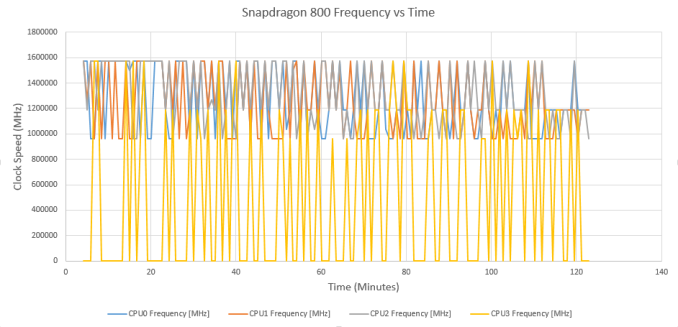
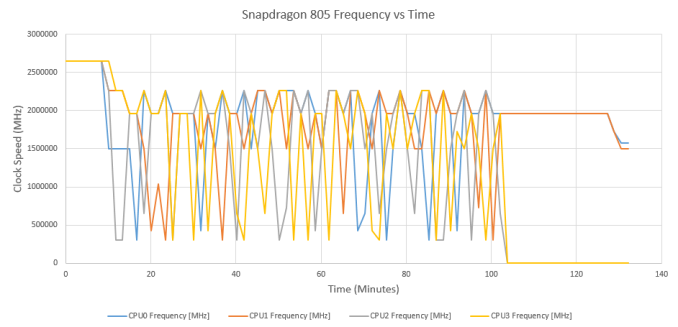
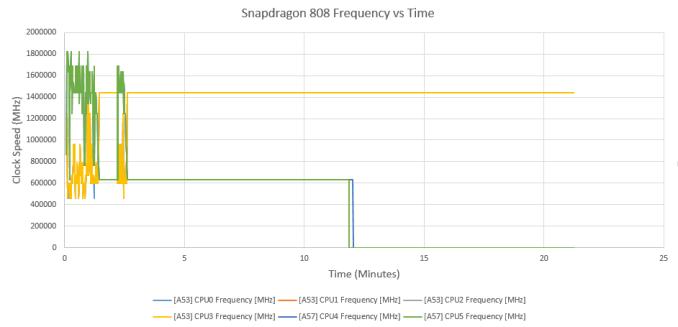








197 Comments
View All Comments
syxbit - Monday, November 9, 2015 - link
I'm really glad this review took a serious look at many low level design decisions.Many other reviews simply praised the 5X. The screen, fingerprint reader and camera are fantastic. Battery life seems good, as is the form factor and price. However, Qualcomm completely screwed the pooch in 2015. I'm glad that's duly noted.
No hardware encryption is a real shame, as is the lack of UFS 2.0, USB 3.0 and OIS. At this pricepoint, it's possibly acceptable. But if Google is really supposed to be raising the bar, and teach other OEMs how to build a phone, they've missing a few things.
And that's why the Nexus 5 was Google's best ever nexus. Qualcomm was on top of the world with the SD800, and lack of encryption meant the storage performance and battery problems associated with it didn't exist. Two years have not brought the advancement they should have.
Many of these problems are acceptable at this price point, but I'm less forgiving at the N6P price point. The sad state of Android right now is that despite the hundreds of hardware options, if you want pure Android, you have about as many options as an iPhone buyer.....
I bought the N6P because there are no other compelling Android devices. Don't get me wrong, I'm very happy with it. But I'd much rather have an Android phone with Apple's SoC and hardware encryption, Samsung's UFS storage and Sony's battery life.
zeeBomb - Monday, November 9, 2015 - link
UFS 2.0 is totally new NAND though. While its still a relatively new addition to flash storage devices, I can see more devices other than Samsung using it in the future.sci2 - Monday, November 9, 2015 - link
I agree with your last points - It's why I imported a Sony Z5 (to the US). Nearly stock Android, waterproof, expandable storage, excellent battery life and camera. Basically, what in my mind, the 5x should have been. Three weeks in and I'm loving it. My (absolutely terrible) S6 is waiting for a new home on craigslist.konondrum - Monday, November 9, 2015 - link
Why do you not like your s6? It's certainly the best phone I've ever owned. My biggest complaint is the fingerprint scanner isn't as reliable as it should be. I'm somewhat hopeful that an update to the Marshmallow API will help, but I'm not counting on it. Otherwise, once I installed the Google Now launcher (TouchWiz is still gaudier than even iOS) it's been very smooth sailing for me.MykeM - Wednesday, November 11, 2015 - link
What would you want the slower UFS 2.0 instead of the iPhone 6s' NVMe/PCIe storage solution.melgross - Monday, November 9, 2015 - link
One thing I disagree with in the camera testing is that if HDR+ is going to be shown for a model, then it's required that HDR be tested for every other phone that's being compared to it. And where is the Galaxy S6 in most of these tests? That much closer to this than the Note 5.Brandon Chester - Monday, November 9, 2015 - link
The SoC in the Note 5 behaves the same as the S6, and I specifically added the S6 into the battery charts.blahsaysblah - Monday, November 9, 2015 - link
I noticed that they moved the power and charging port both to the bottom.Did you have any issues with that configuration?
Android on Nexus didn't support landscape mode for longest time in non-tablet mode(i think it was re-introduced to Nexus phones in 5.0). It still doesn't support upside down mode. I can understand a little because microphone/speaker placement. It would still be better if it forced/switched to right side up when calls came in and let you use apps with phone upside down until necessary.
Any issues with all cables on bottom?
Brandon Chester - Monday, November 9, 2015 - link
I'm pretty used to having all the cables on the bottom of a phone at this point so it never posed an issue.LoneWolf15 - Monday, November 9, 2015 - link
Every review I've read so far convinced me to buy a Nexus. Only it was a slightly used Nexus 6.The Nexus 5X and 6P lack wireless charging (and I already have a Qi charger). They lack Quick Charge/Turbo Charging, which the 6 has. The 5X lacks 3GB of RAM, and the big battery I was hoping they would have (I honestly wanted a phone the size of the 5X, but I can't have everything). And I could save over $100 buying a slightly used 32GB 6 over a 32GB (I don't even know why they released a 16GB) Nexus 5X. The only thing I don't get is a fingerprint reader.
I wanted a phone the size of a 5X, but with more features, and that wasn't an option. And the 6P wasn't really what I wanted either. The closest to what I wanted would be the Moto X Pure, which doesn't offer me the updating schema of the Nexus brand. I continue to wait for the ultimate Nexus in a 5.2-5.5" display I can use one-handed, but I'm not holding my breath.